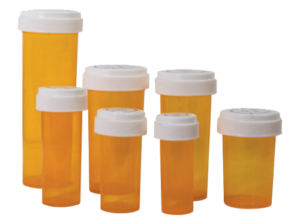Is Sedation Dentistry Safe?
Yes.
. . .
Oh, were you expecting more than that? Okay. We’ll elaborate.
What Types of Sedation are Available in Dentistry?
 Dentists typically offer two to three methods of sedation for patients who are anxious about treatment. The options may differ depending on the dentist’s training and level of comfort with sedation. The most common and lightest form of sedation is inhalation of nitrous oxide, or laughing gas. While this inhaled medication is technically NOT a sedative, it has some sedative effects. Nitrous oxide makes the patient feel relaxed and sleepy, often gives a bit of amnesia-like effect, and makes the appointment seem to go by very quickly. It does not put the patient to sleep, but some patients become so relaxed that they do fall asleep during their appointment.
Dentists typically offer two to three methods of sedation for patients who are anxious about treatment. The options may differ depending on the dentist’s training and level of comfort with sedation. The most common and lightest form of sedation is inhalation of nitrous oxide, or laughing gas. While this inhaled medication is technically NOT a sedative, it has some sedative effects. Nitrous oxide makes the patient feel relaxed and sleepy, often gives a bit of amnesia-like effect, and makes the appointment seem to go by very quickly. It does not put the patient to sleep, but some patients become so relaxed that they do fall asleep during their appointment.
Another common option is oral sedation, which involves the dentist administering a prescribed oral medication (a pill) that sedates the patient. There is a variety of responses to oral medications, as far as the level of sedation goes. Some patients metabolize the drug rather quickly and experience a minimal effect. Others will sleep for an entire day on one dose. There are many factors that can affect the body’s absorption of these drugs, so it is virtually impossible to predict just how a single person will respond.
The third, and most predictable, option for sedation dentistry is through the use of intravenous (IV) sedation. With IV sedation, the sedative medication enters the bloodstream immediately and at a specific concentration. The administrator of the sedative can quickly adjust the dosage of the medication for the best effects.
Which Type of Sedation is Safest?
The safest is, without a doubt, inhalation of nitrous oxide gas. Because the concentration necessary to induce death (called the lethal dose) is higher than you can ever achieve through inhalation, it is impossible to die just from inhaling laughing gas. That’s not to say it won’t make you ill. It just won’t kill you. The problem with laughing gas is that it does not produce a true sedation effect.
For true sedation in the safest manner possible, IV sedation is the option you should choose. As we discussed in the previous section, with oral medication it is difficult to predict how the body will absorb, distribute and metabolize it. In comparison, IV sedation medications can be adjusted minute-by-minute. This allows the administrator of the medication to closely titrate it to the appropriate level for both maximum effectiveness and safety.
Who is Not Safe to Have Sedation Dentistry?
 Patients with serious medical conditions are probably not candidates for sedation dentistry. Dr. Ann will work with your medical doctor(s) to obtain clearance if your doctor(s) deem that you are healthy enough to be sedated. The risks associated with sedation are highest in the area of something called respiratory depression. This means that the sedation medication suppresses the body’s natural reflex to breathe at high doses. Obviously, not breathing is a problem. So people who hope to receive sedation dentistry must have healthy lung function.
Patients with serious medical conditions are probably not candidates for sedation dentistry. Dr. Ann will work with your medical doctor(s) to obtain clearance if your doctor(s) deem that you are healthy enough to be sedated. The risks associated with sedation are highest in the area of something called respiratory depression. This means that the sedation medication suppresses the body’s natural reflex to breathe at high doses. Obviously, not breathing is a problem. So people who hope to receive sedation dentistry must have healthy lung function.
Patients who take multiple prescription medications, which run the risk of interacting with the sedative, also must receive medical clearance before proceeding with any type of sedation.
If you fall into any of these “unsafe” categories, it does not mean that you cannot get dental treatment with sedation. It simply means that you will likely be unable to receive the sedation in your dentist’s office. Your dentist can instead work with an anesthesiology team to accomplish any necessary dental work in a way that provides utmost safety and comfort.
What Questions Should I Ask My Dentist about Sedation?
If you’re anxious or afraid of dental treatment, you should definitely ask your dentist about sedation options. As we stated earlier, the options will likely differ from office to office. At Designer Smiles, we are proud to offer every level of sedation to our patients. We believe strongly that fear should never be a barrier to getting the essential dental care you need.
You should also ask about any credentials necessary to administer that type of sedation. Each level carries a different certification with continuing education requirements. The dental regulatory agencies have many safeguards in place to ensure the safety of any patient undergoing sedation with a dentist. Dr. Ann is one of the few general dentists trained and certified to perform IV sedation for her patients. She underwent a rigorous course of study, passing all of the requisite exams to achieve this high-level certification.
 When considering sedation with oral or IV medication, it is essential that you discuss any potential interactions between the sedative and medications you take. You should ask, “Is there any medical problem or medication I have that could cause a problem with sedation?” This is where complete transparency is of the utmost importance. Your dentist needs to know every substance you are taking to ensure there are no dangerous interactions, whether these are legal drugs or illicit. For example, patients who take opioids (like Norco, Percocet, or OxyContin) have a much higher risk for breathing suppression when sedated.
When considering sedation with oral or IV medication, it is essential that you discuss any potential interactions between the sedative and medications you take. You should ask, “Is there any medical problem or medication I have that could cause a problem with sedation?” This is where complete transparency is of the utmost importance. Your dentist needs to know every substance you are taking to ensure there are no dangerous interactions, whether these are legal drugs or illicit. For example, patients who take opioids (like Norco, Percocet, or OxyContin) have a much higher risk for breathing suppression when sedated.
More Questions about Sedation Dentistry?
Call Designer Smiles today to schedule a consultation with Dr. Ann to discuss your dental needs and your desire for sedation. She is happy to guide you to the safest, most comfortable option for your unique situation.
